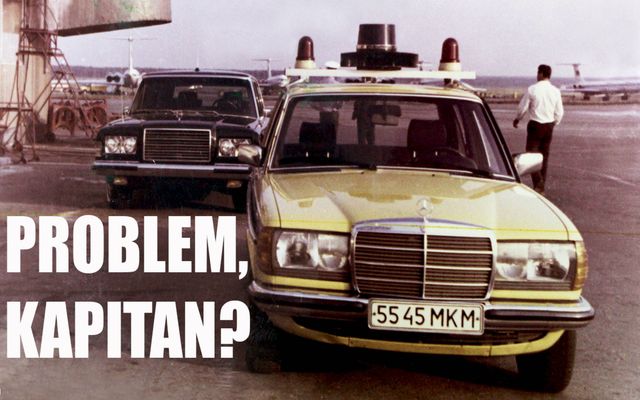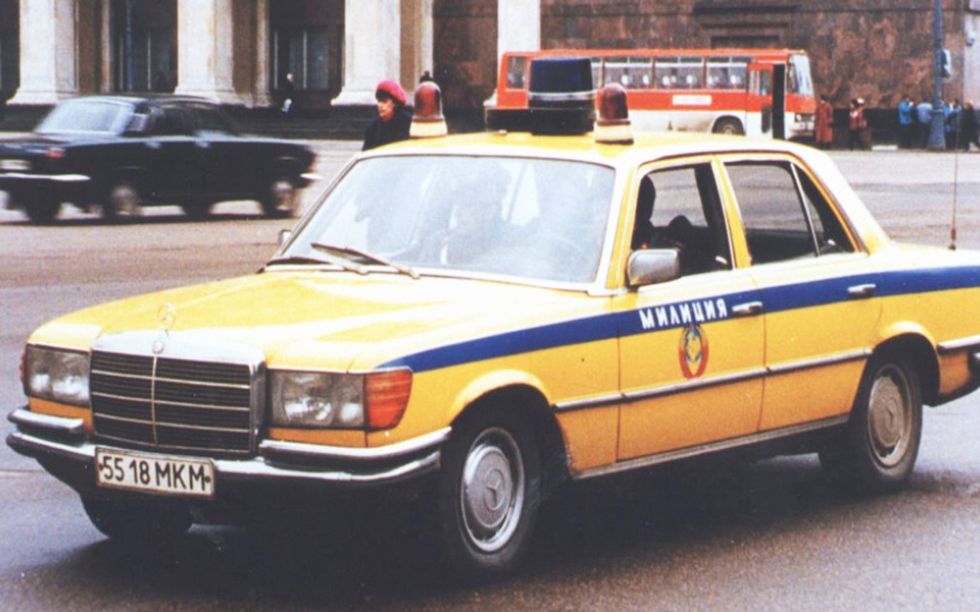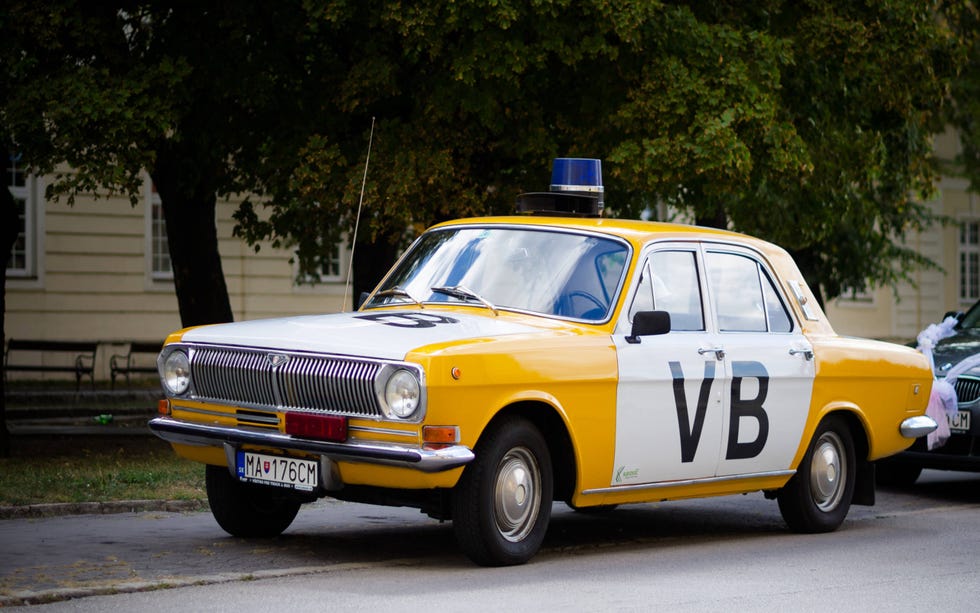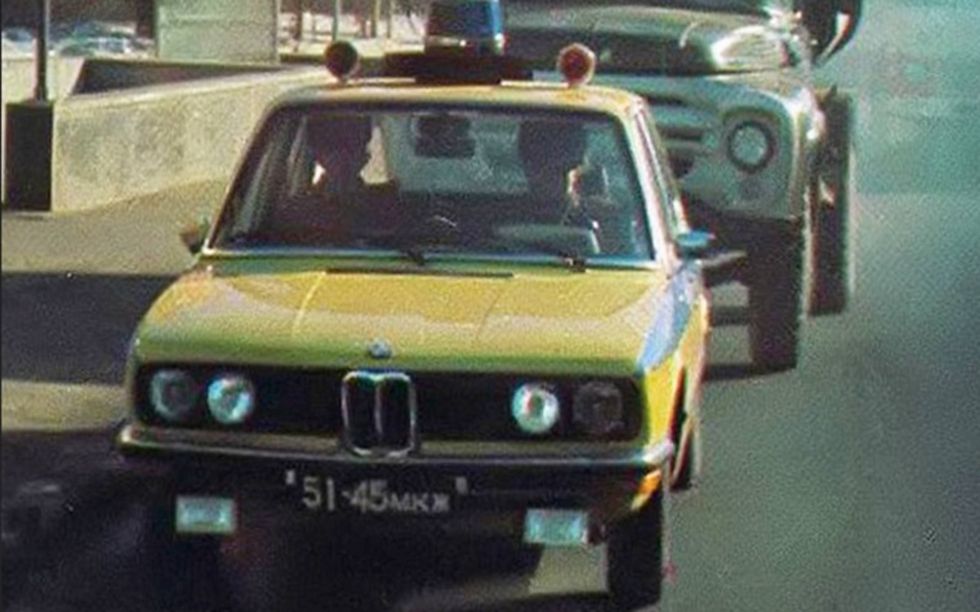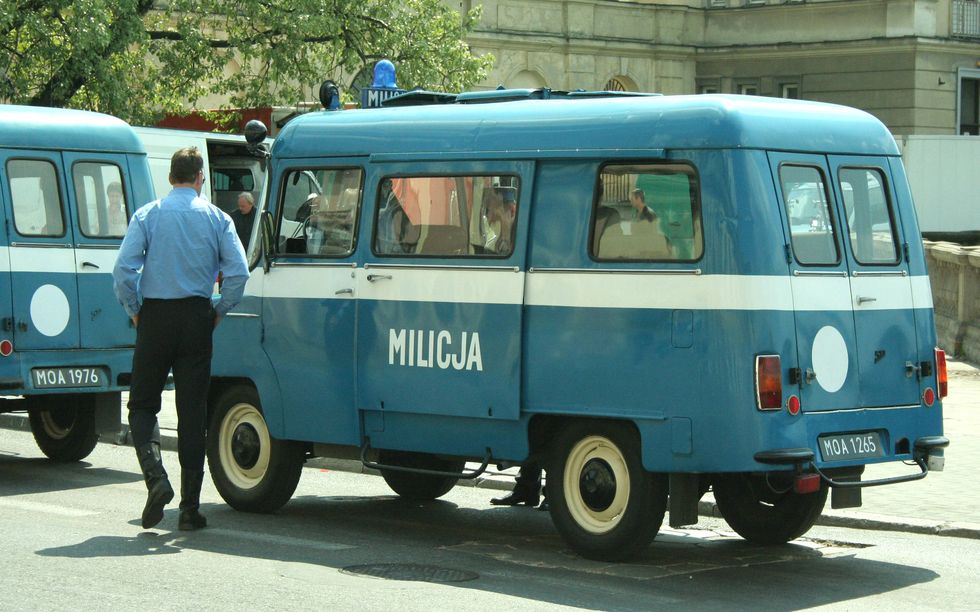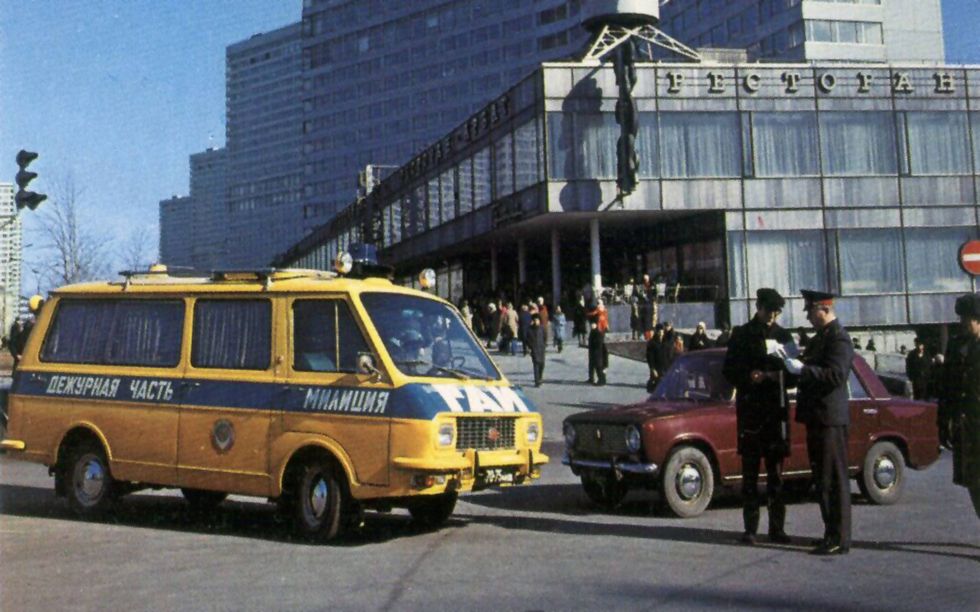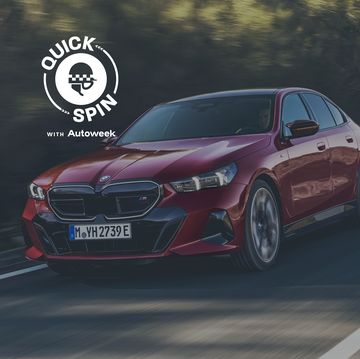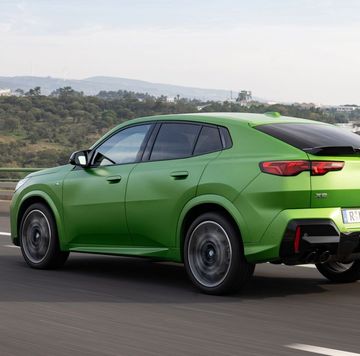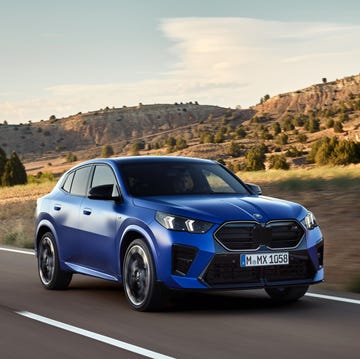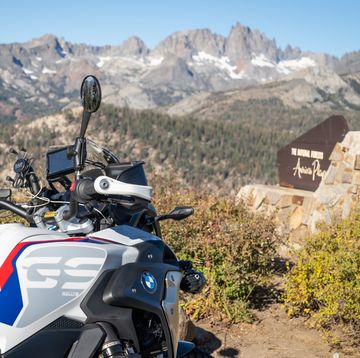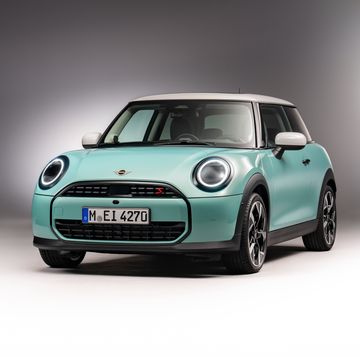Public safety-related machinery from behind the Iron Curtain may have the reputation of being just fast enough to outrun bicyclists, but not every police car chase was a contest between a couple of twin-stroke Wartburgs working their gearboxes a full three minutes to get up to 55 mph, with the loser inevitably being the car that ran out of two-stroke fuel first.
While the majority of police cars in Eastern Bloc states did indeed use the limited capabilities of most privately owned cars to their advantage, there were a few that were simply the fastest cars on the road in their respective countries.
Here's a look at the trusty and sometimes rusty steeds of Eastern Bloc's traffic enforcement agencies that we're betting you've never seen in police livery:
Tatra 613 (USSR)
The Czechoslovakian Tatra 613 replaced the long-serving 603 in 1974, taking over its primary role as a government limo. The Vignale-styled 613 kept the rear-engine, rear-wheel drive layout of the 603, shrinking in size but gaining useable interior room. Powered by a 3.5-liter V8 engine, it was one of just a handful of V8 engined sedans (as opposed to limousines) produced in Eastern Bloc countries, with others being the GAZ 2434 Volga, ZiL 117 and later the ZiL 41041. Out of all of those, the 613 was the most plentiful, even though production never even touched 1,000 units a year.
The 613 was exported from Czechoslovakia in tiny numbers, usually as diplomatic rides, and even the USSR never really managed to receive these in any significant number. A small group, pictured above, were supplied to Moscow's special government escort batallions without really being fully repainted in standard police colors, which used the for a few years before handing them over to the Ministry of Foreign Affairs. In the photo above you can also spot a W116-generation Mercedes-Benz.
Why it pulled you over: You didn't get your sad, rusty tub out of the way of the government motorcade fast enough and almost got hit by one of the lead Mercedes-Benz sedans. They read you a lecture and let you go.
Equipment: Beacons either by Bosch or Tesla, siren by Tesla, radio, fog lights.
How good was it at catching bad guys? These were among a very small group of V8-engined police cars, so nobody really had a chance except for western tourists driving Porsche 911s. Yes, those sorts of encounters took place at times.
Max speed: 120 mph.
Replaced by: More Mercedes-Benz sedans like the W126 S-class.
Mercedes-Benz SE/SEL W116 (USSR)
A rare police car is the USSR, the W116-generation Mercedes-Benz sedan were puchased in small numbers exclusively as an escort car for government motorcades. Replacing the W108 cars from Stuttgart that were imported in the 1970s, the W116 SELs were used in motorcades since they were the only cars that could keep up with V8-engined ZiL 114, ZiL 117, and later ZiL 4104 whose speeds and handling characteristics GAZ 24 police cars just couldn't match. Other western models such as the E9 and E12 BMW sedans also served in the special escort batallions.
Why it pulled you over: You decided to race a government motorcade in your Lada 2101. You're able to convince them that you're the cousin of one of the vice-chairmen on the Moscow city council, so they call him up on their radiotelephone and tell him you tried to run a government limo off the road. He pretends he doesn't know you and hangs up. You have a couple of other well-placed friends but they don't let you call them.
Equipment: Kavkaz encrypted radiotelephone system, beacons by Bosch and Tesla (not that Tesla), siren by Tesla.
How good was it at catching bad guys? These cars were effectively the fastest things on the country's roads. There were simply no other cars on the road that could outrun them, especially with the studded, high profile tires that these cars wore nearly year round.
Max speed: 130 mph.
Replaced by: W124, W126, W202 Mercedes-Benz S-class, E-class and C-class sedans.
GAZ 24 Volga (Czechoslovakia)
The GAZ 24 Volga replaced the GAZ 21 in 1970, representing a tremendous leap in design and technology over its predecessor. Of course, the 21 was in production for 15 years, so anything was going to be an improvement with the painfully long production cycles of Soviet passenger cars. Packing an aluminium-block overhead valve 2.5-liter inline-four connected to a four-speed manual transmission, the GAZ 24 Volga was relatively spacious and fast by the standards of the time, but by no means quick on its feet. The lack of power steering meant that drivers got a pretty good workout just driving the sedan even at slow speeds.
The most expensive car one could buy in the USSR, GAZ 24 sedans could rarely be afforded by private individuals and were really designed for taxi and government service. That included the police, and the GAZ 24 was supplied to other Eastern Bloc friends including the Volkspolizei of East Germany and Verejná Bezpečnosť forces of Czechoslovakia. The station wagon of the 24 with the catch model name 2402, was also used by Verejná Bezpečnosť in contrast with USSR's Militsia which preferred only sedans.
Why it pulled you over: Your Wartburg 353 ran out of gas because there's a fuel shortage, and the two canisters you carry in the trunk are also empty. The VB will spot you half a liter of gas (in exchange for a modest fee) because they feel bad for you.
Equipment: Tesla beacon and siren, messenger light on the grille for signaling drivers to stop, radio.
How good was it at catching bad guys? Almost as good as the Tatra 613, which Verejná Bezpečnosť also employed. But the GAZ was mass produced, cheaper by a significant margin to maintain, and was more than enough for the job.
Max speed: 90 mph. Which was a good 15 mph faster than just about everything else on the road.
Replaced by: After the split of Czechoslovakia, the Czech Republic and Slovakia turned to German cars as well as Skodas.
BMW 5-Series E12 (USSR)
The E12-generation BMW 5-series debuted in 1972 as the new midsize sedan in Munich's newly emerging lineup. Positioned below the E3 New Six sedans, the E12 were designed to compete with the Mercedes-Benz W114 sedans and were quickly adopted as police cars in a number of countries due to their compact design and good versatility. A small group of cars were purchased in the early 1970s by Moscow's traffic police force for general purpose uses, not specifically as motorcade escort vehicles. These 5-series cars typically patrolled the city's main thoroughfares and sat watch over the roads used by government motorcades.
These BMW sedans didn't survive into the 1980s as terrible gasoline, road quality and road salt meant that pretty much all police cars had a relatively short lifespan.
Why it pulled you over: It's wintertime and road slush is blocking your license plate, your headlights, your windshield (you're out of windshield washer fluid because there's a shortage) and your car is basically dirty to the point that they can't tell if you're driving your Moskvitch forward or backwards. You can't have a dirty car in the capital. They're making you wash it on the spot with some dirty water from a nearby puddle. Your car is still dirty, but they can see your license plate now a little better.
Equipment: Beacon and siren system by Tesla, radio.
How good was it at catching bad guys? Aside from the V8-engined Mercedes-Benz W116 sedans, these were among the fastest cars on the road.
Max speed: 124 mph.
Replaced by: BMW E28 5-series sedans, which were imported in slightly greater numbers.
ZSD Nysa 522 (Poland)
The Polish Nysa van shared the same platform as the boxier Zuk van, and it used a plaform that dated much further back to the Warszawa sedan of the 1950s. One of the few vans made in Eastern Bloc countries (which were constantly in short supply) the Nysa was a common vehicle used by Poland's police forces, the Milicja. Early versions of this tall van used the engine and gearbox that were shared by the Warszawa sedan, itself a restyled version of the GAZ M20 Pobeda. The Nysa debuted in 1958 with 1940s technology inside, despite the relatively modern looks (for the 1950s) and stayed in production until 1994 with periodic changes to its exterior.
The version above is a facelift that arrived in 1968, with the van gaining a more pronounced hood. Despite the van bodystyle not every version in Milicja use was configured to carry suspects, and passenger sedans weren't equipped with a secure passeger compartment either.
Why it pulled you over: Some non-crucial part fell off your Polski Fiat 126p (which happens weekly) but the Milicja car ran over it and got a tire puncture (which happens weekly). You have to give them cash on the spot for two new tires and money for dinner.
Equipment: Single beacon on bracket, siren system, radio.
How good was it at catching bad guys? It wasn't fast... but it could carry a lot of perps once it caught them.
Max speed: 60 mph, which was above most speed limits in countries that used the Nysa, and was enough most of the time.
Replaced by: Western models like the Ford Transit and Volkswagen Transporter, well before the last example rolled off the line in 1994.
Izh 412
A badge-engineered version of the Moskvitch 412, the Izh 412 entered production in 1967 in Izhevsk. Featuring a 75-hp 1,480 cc four-cylinder engine driving the rear wheels via a four-speed manual transmission, the 412 was positioned slightly below the VAZ 2101 (the licensed Fiat 124) which also entered production around the same time. Nevertheless, the Izh and its Moskvitch twin were actually quicker than the Ladas. They were also a little easier to service and were in less demand than the new Ladas, which had the cachet of Fiat engineering and design. This made them popular with middle-class citizens and police forces alike, even though the Izh was not as widely encountered as other Soviet police cars of the time.
Why it pulled you over: Your plates indicate you're from another region, and that makes you suspicious even though you're not speeding or doing anything wrong. You get the traffic policeman talking and you're surprised to find out that you have friends in common. He gives you a box of pastries and a map as a gift and radios other police cars ahead not to bother you.
Equipment: East German beacon and old-style siren on a roof rack, radio.
How good was it at catching bad guys? The Izh 412 was one of the quickest cars on the road, and unlike private cars it carried more gasoline in the tank. You might be able to stay ahead of it, but you would run out of gas faster.
Max speed: 86 mph.
Replaced by: Moskvitch 427, Moskvitch 2140.
RAF 2203
Using a GAZ 24 engine and platform, the Latvian-built RAF 2203 minibus debuted in 1976, replacing the earlier RAF 977. With the engine between the driver and the front passenger, the RAF 2203 nevertheless boasted a spacious interior with enough room for 11 passengers. This made it a popular route taxi (essentially a bus that runs a shorter circuit) as well as one of the few minibuses that were purpose-built in ambulance form. The RAF 2203 was also produced in police form for the USSR, serving as a multi-purpose Militsia car, crime lab, traffic accident response team, or mobile toxicology lab.
The GAZ 24 chassis was sturdy enough, but the body-on-frame construction and the narrow track made it a tricky and top-heavy handler. The inline-four GAZ engine may have been just right for the sedan, but hauling that huge body meant that the manual transmission had to be worked expertly. The 2203 was also prone to understeer, in addition to a whole host of other issues. Still, this was the sole Soviet rear wheel-drive minibus for a whole generation, stretching all the way into the 1990s.
Why it pulled you over: Your Lada's exhaust is emitting a ton of smoke because the gasoline you bought was mixed with who knows what. You get a ticket for not carrying a first-aid kit.
Equipment: Tesla beacon and siren, radio, two roof-mounted spotlights, one rear spotlight
How good was it at catching bad guys? If you wanted to fly past one at some crazy speed, like 66 mph, you'd probably get away with it because these took forever to get up to speed.
Max speed: 74 mph.
Replaced by: GAZ 3221 Gazelle.

Jay Ramey grew up around very strange European cars, and instead of seeking out something reliable and comfortable for his own personal use he has been drawn to the more adventurous side of the dependability spectrum. Despite being followed around by French cars for the past decade, he has somehow been able to avoid Citroën ownership, judging them too commonplace, and is currently looking at cars from the former Czechoslovakia. Jay has been with Autoweek since 2013.
